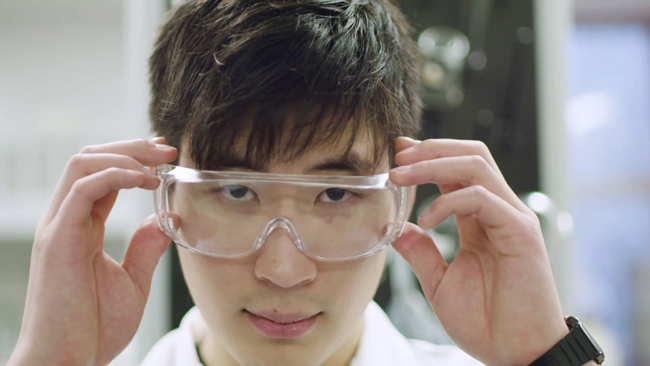
Like mercury, an element he knows better than most, Bryan Lee has an interesting shape-shifting ability that allowed him to transform from a M.Sc atmospheric chemistry student to an award-winning film maker.
On April 5, the Natural Sciences and Engineering Research Council of Canada (NSERC) announced Lee as the winner of its annual Science, Action! Competition – which challenges postsecondary students to make 60-second films about the people, research and innovations that are transforming the way Canadians live and work.
Lee’s winning entry, Mercury on the Move, looks at mercury, a ubiquitous element that, while it can be beneficial, becomes dangerous as it moves its way up the food chain. “A lot of people don’t know that mercury is always in motion,” says Lee. “My research focusses on how surfaces like mineral dust affects the way mercury is transported in the environment and transformed. When it ends up in our oceans bacteria can convert it into an organic form that is much more potent and dangerous.”
Lee’s 60-second cinematic opus beat 25 other finalists that highlighted everything from electric tricycles for adults to setting caps to corporate carbon emissions to reproduction tendencies of silver haired bats. The films were judged on technical quality, creativity and clarity and the NSERC website gave tips to participants that included “focus on key points,” “use plain language” and “titles matter.”
Because he had no prior experience with making a film, Lee enlisted the help of a videographer friend. In all, the pair took about a week to work on the script. The actual production of the video took a day, with some of it filmed in the lab and elsewhere on campus.
“The most challenging part was to distill it into 60 seconds. I wanted to cram as much information as I could into one minute,” says Lee. “The best part was working with the group [on the production]. Getting feedback from them – especially those without a scientific background was key in getting the script together. I realized that there were some things that appealed to them and some things that didn’t. There was a lot of back-and-forth and a lot of really good feedback.”
The goals behind Science, Action! is to help Canadians discover how science and engineering contributes to our understanding of the world and universe, and to stimulate the public’s interest in science and encourage the next generation of students to consider science careers. Lee was happy to contribute.
“Explaining science to the public in a way that is understandable, digestible and easy to listen to is really important,” says Lee. “It is a skill I would definitely like to hone in the future – maybe in the form of a video or written material.
“It was a really fun, challenging experience,” he says. “I would definitely recommend it for others.”
Watch Bryan Lee’s award-winning film by clicking on the thumbnail below
